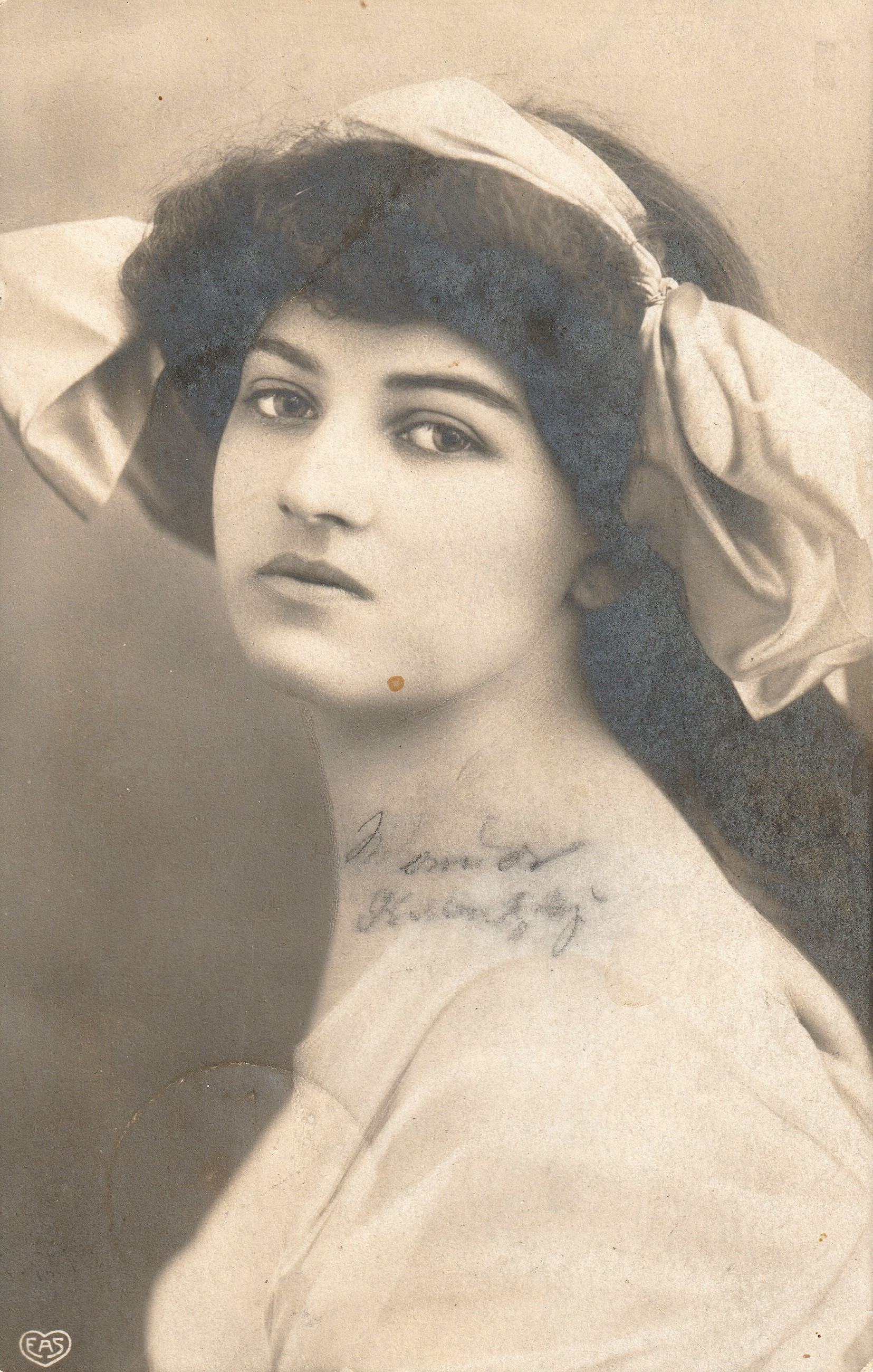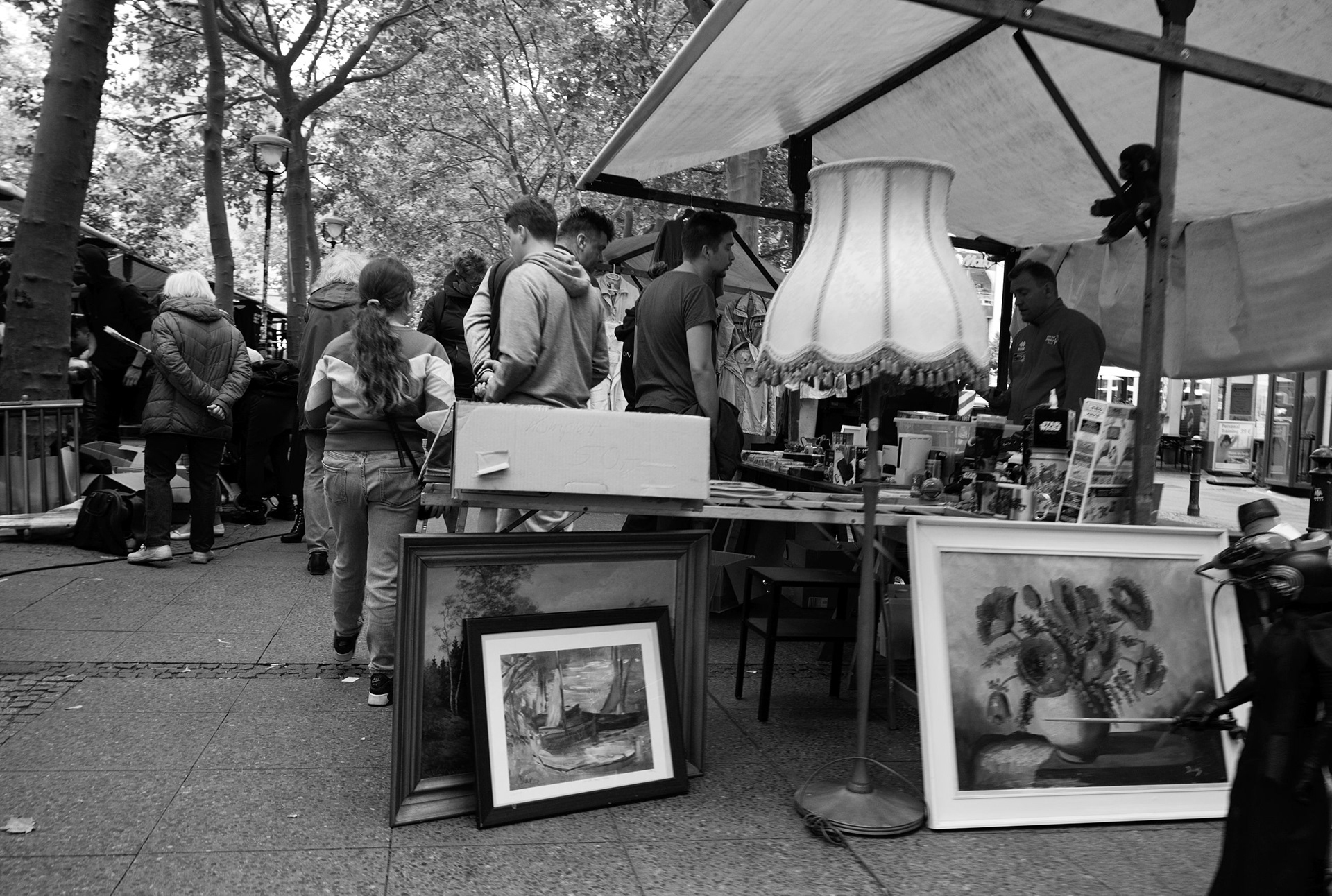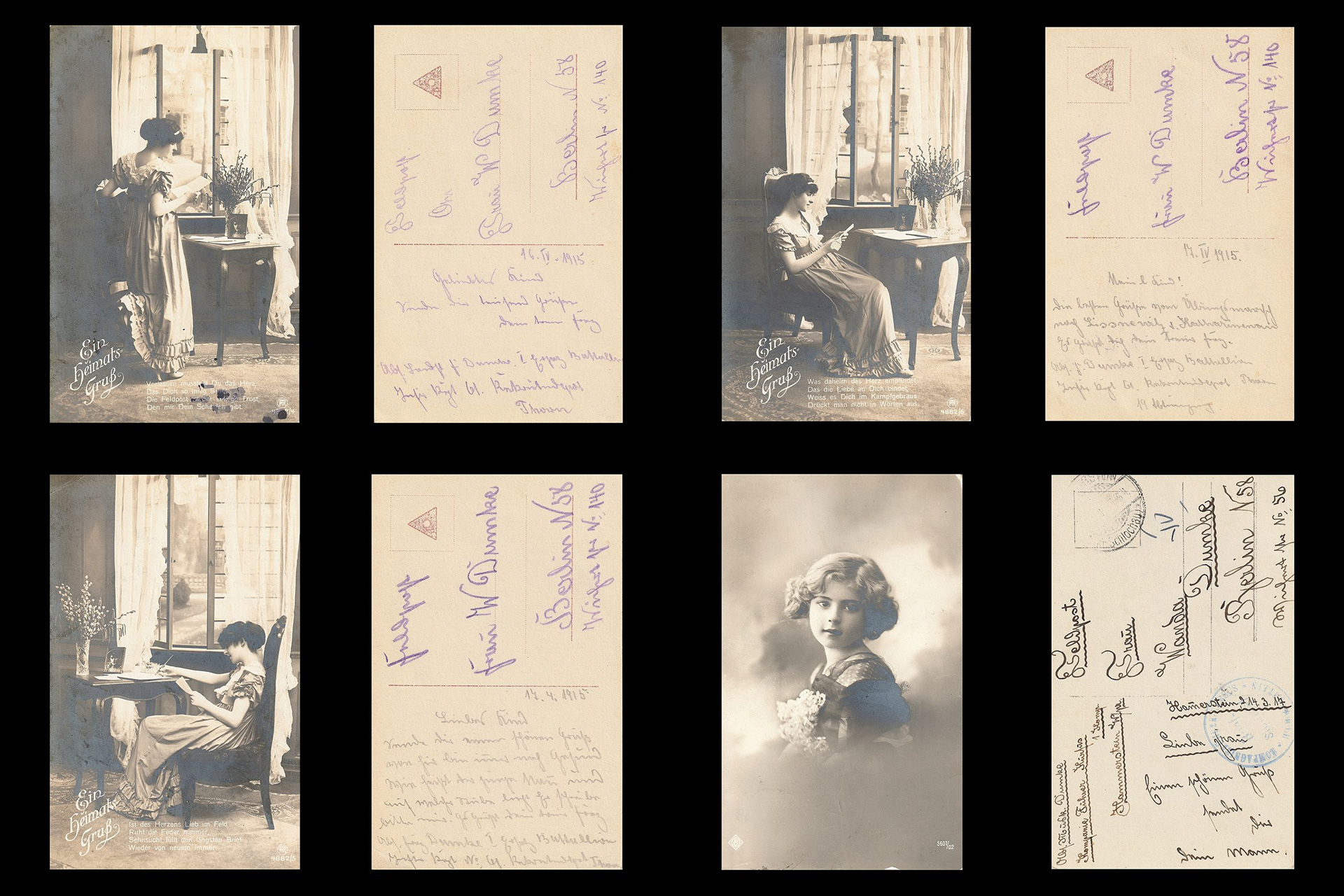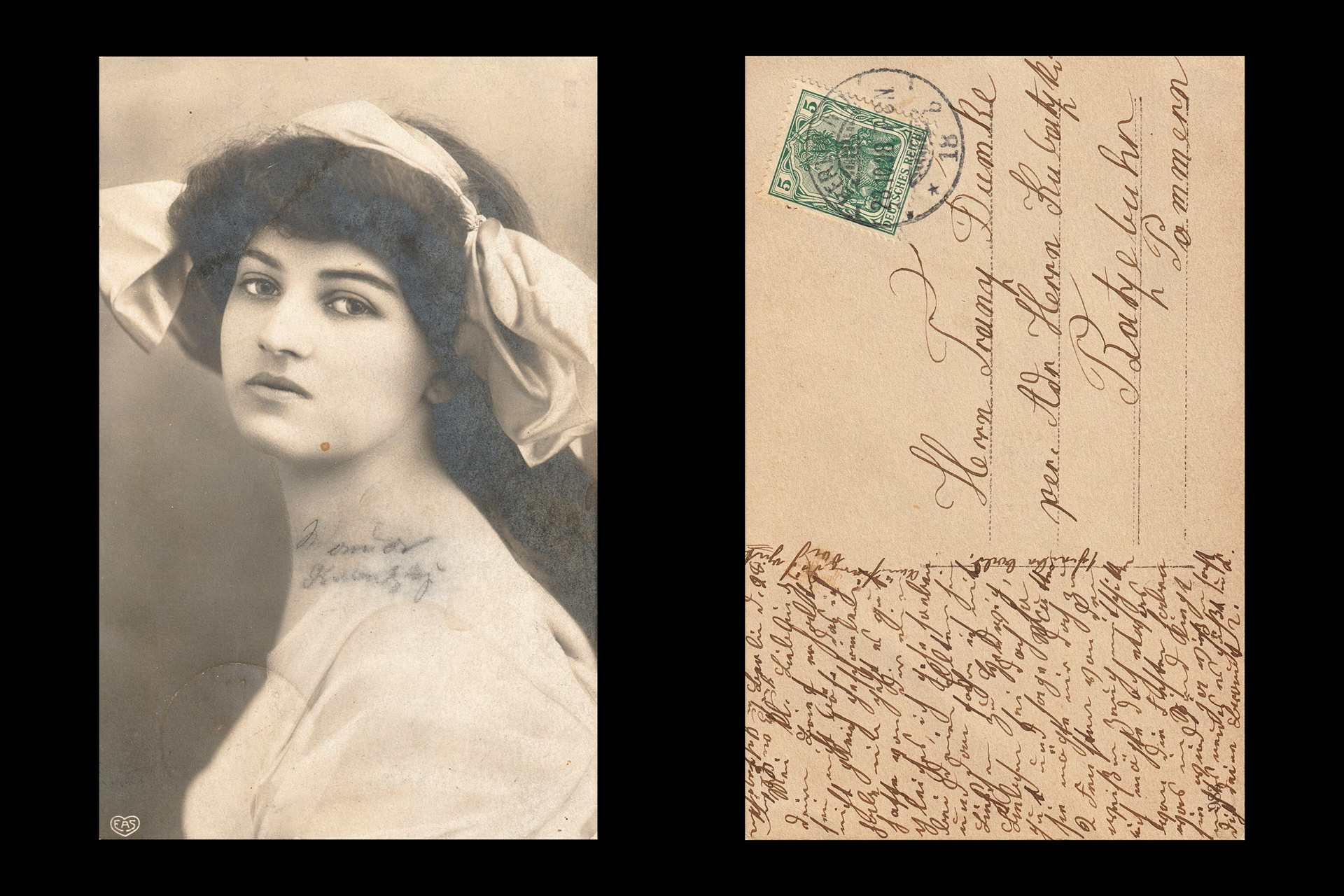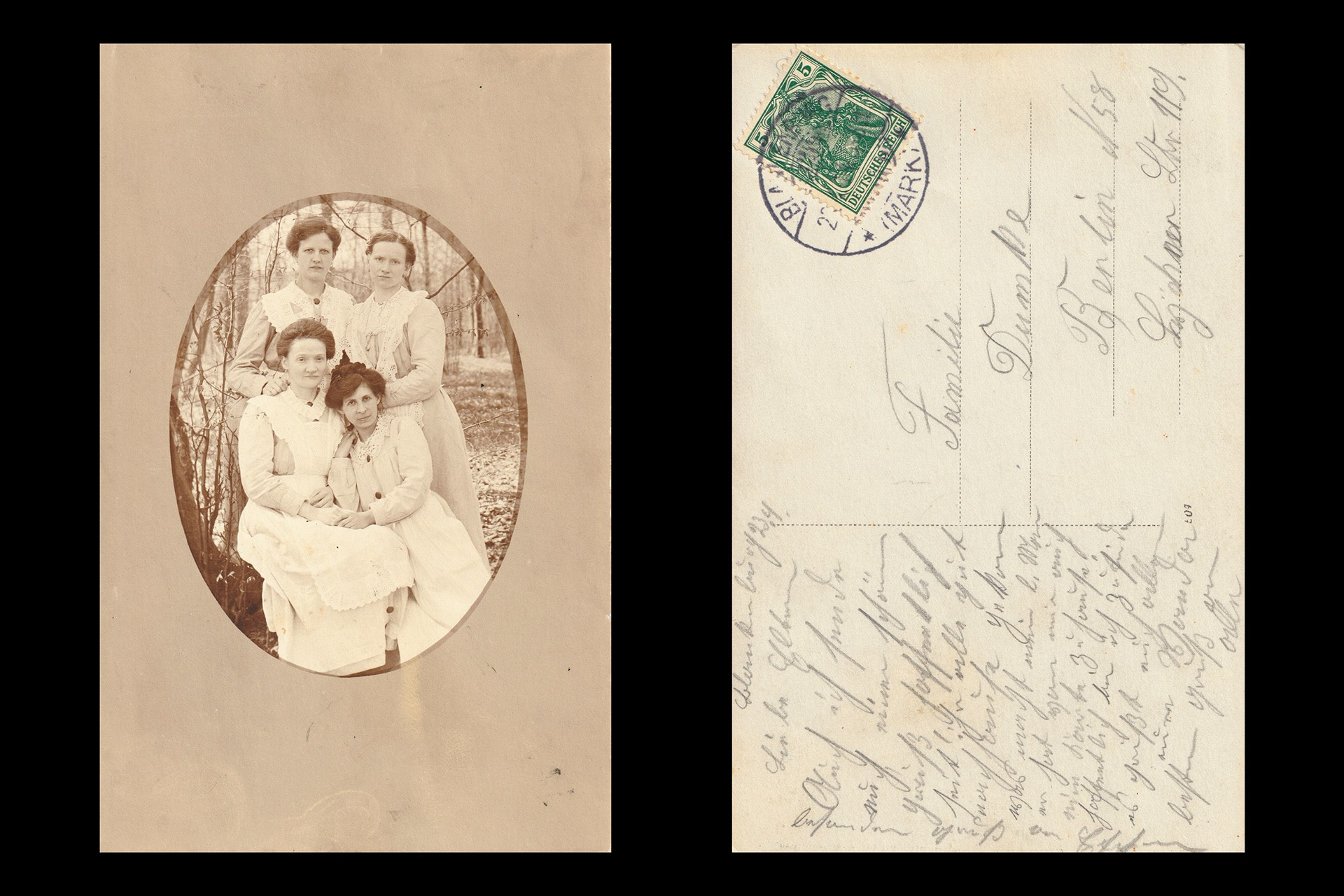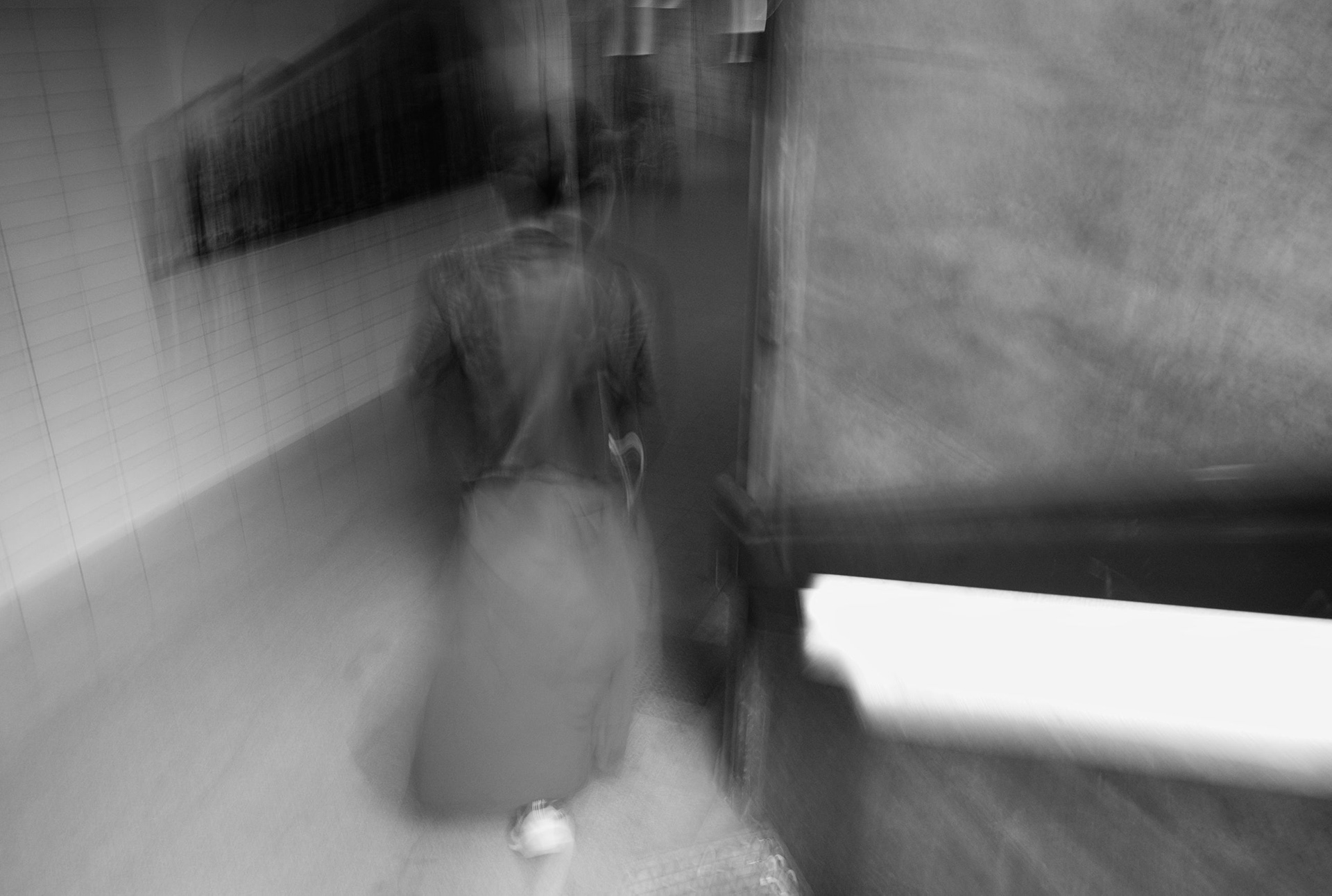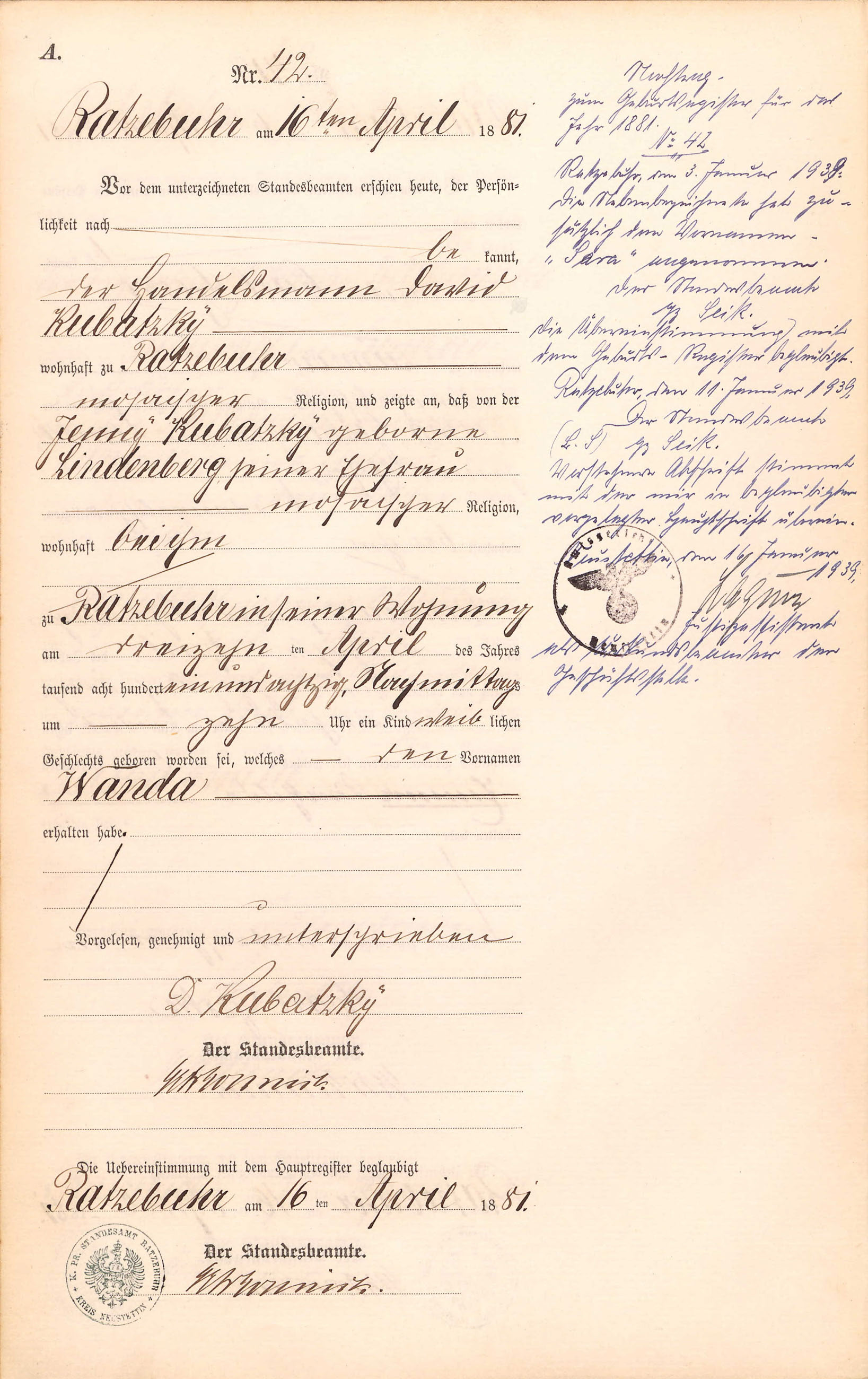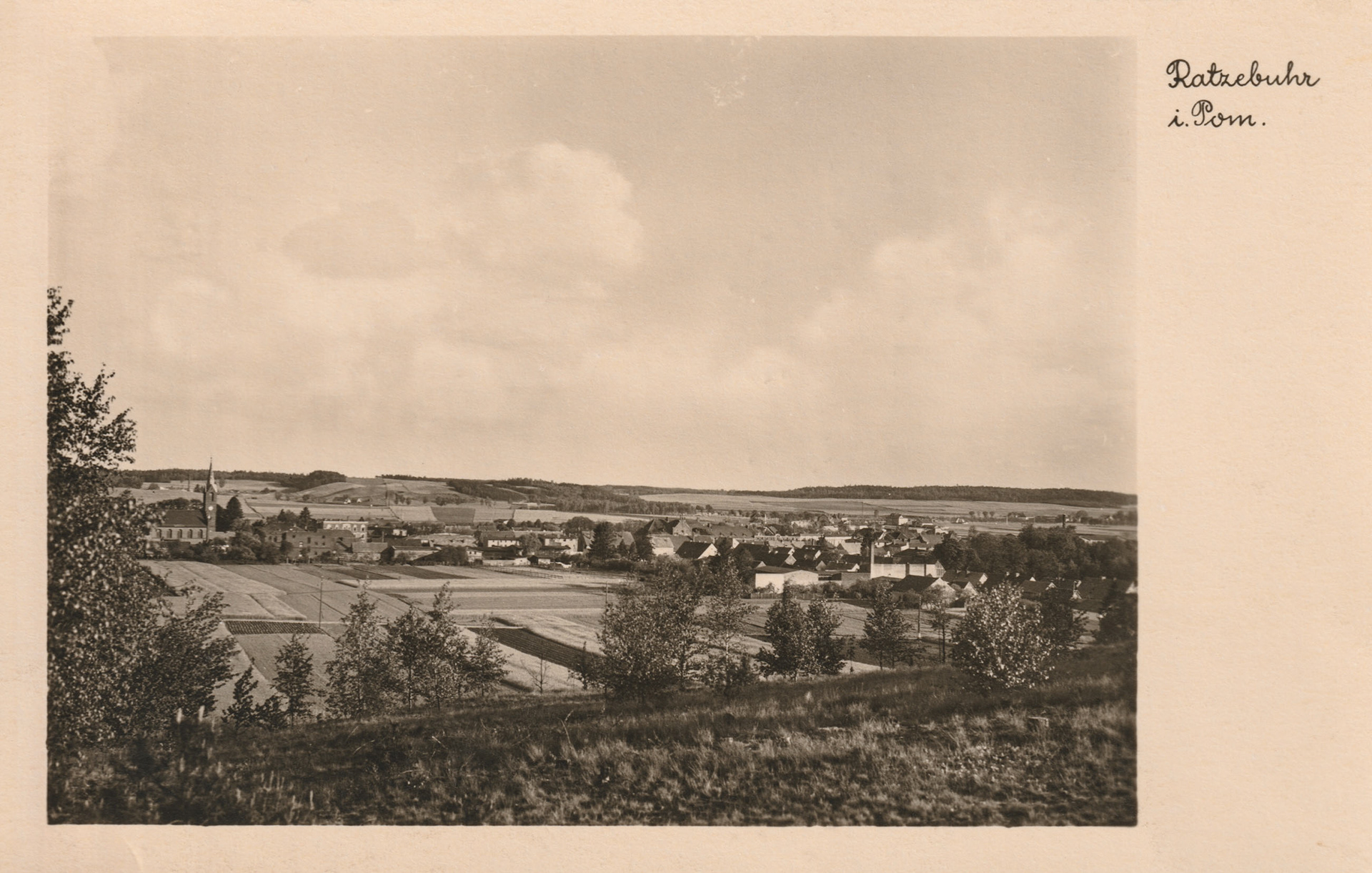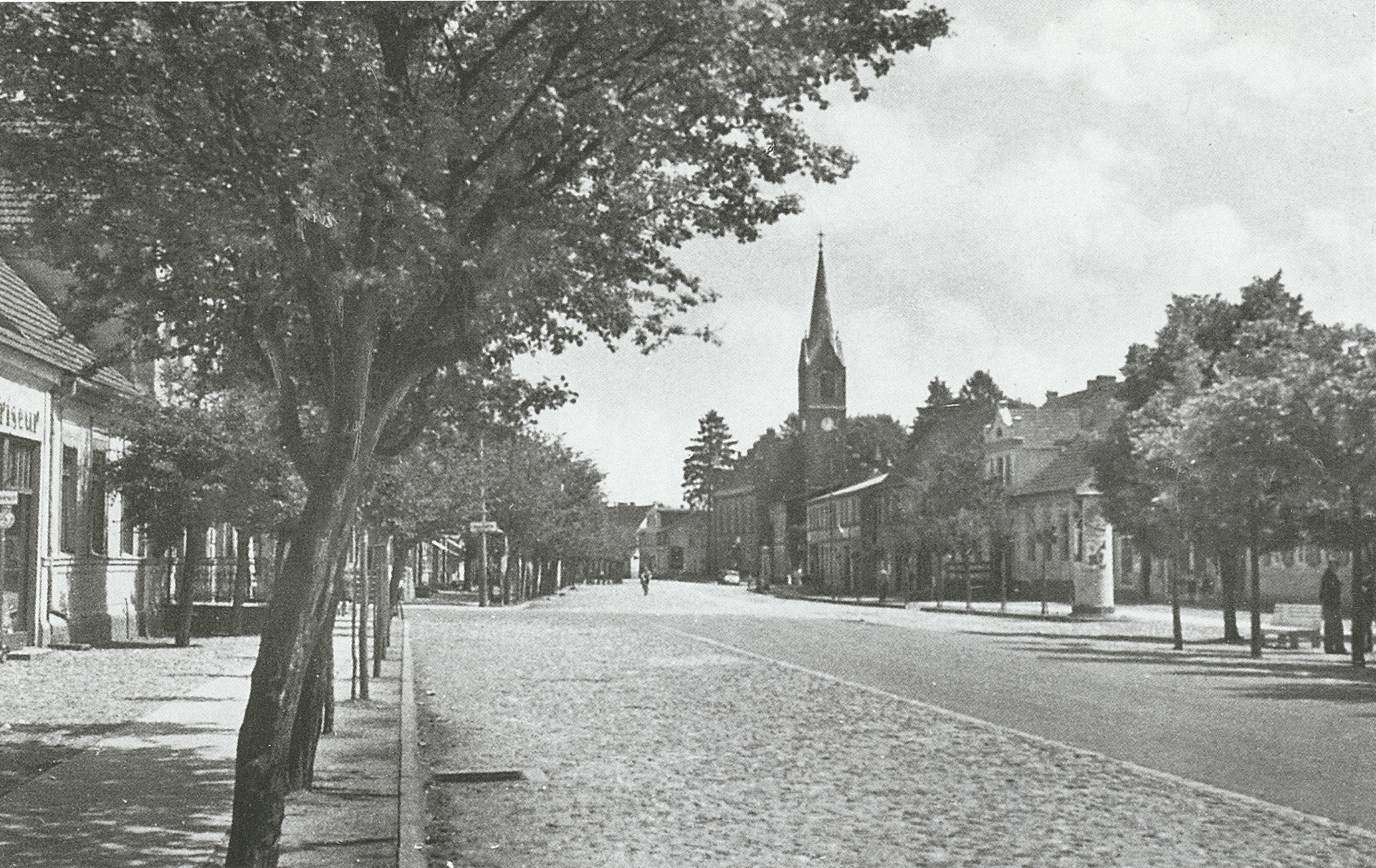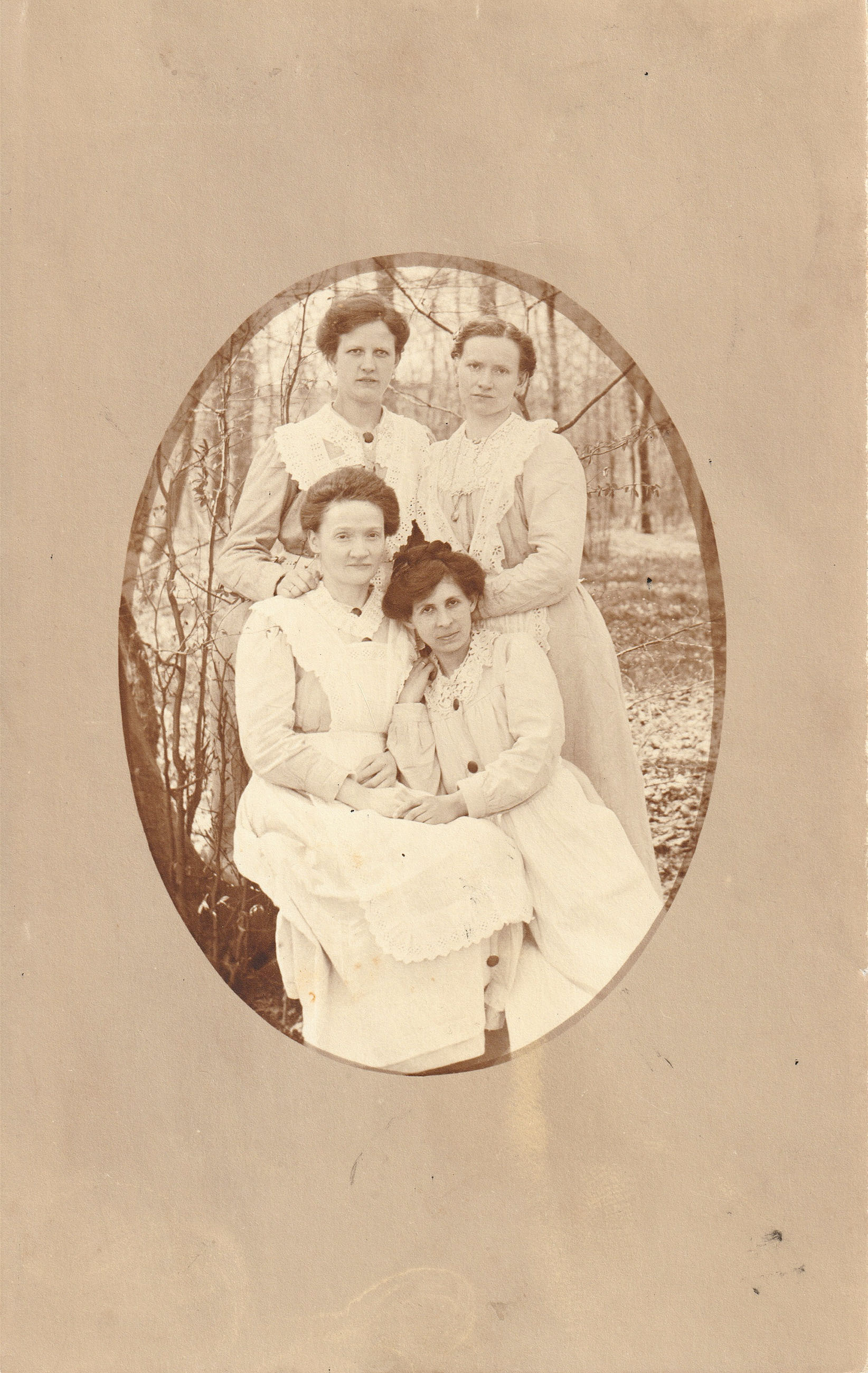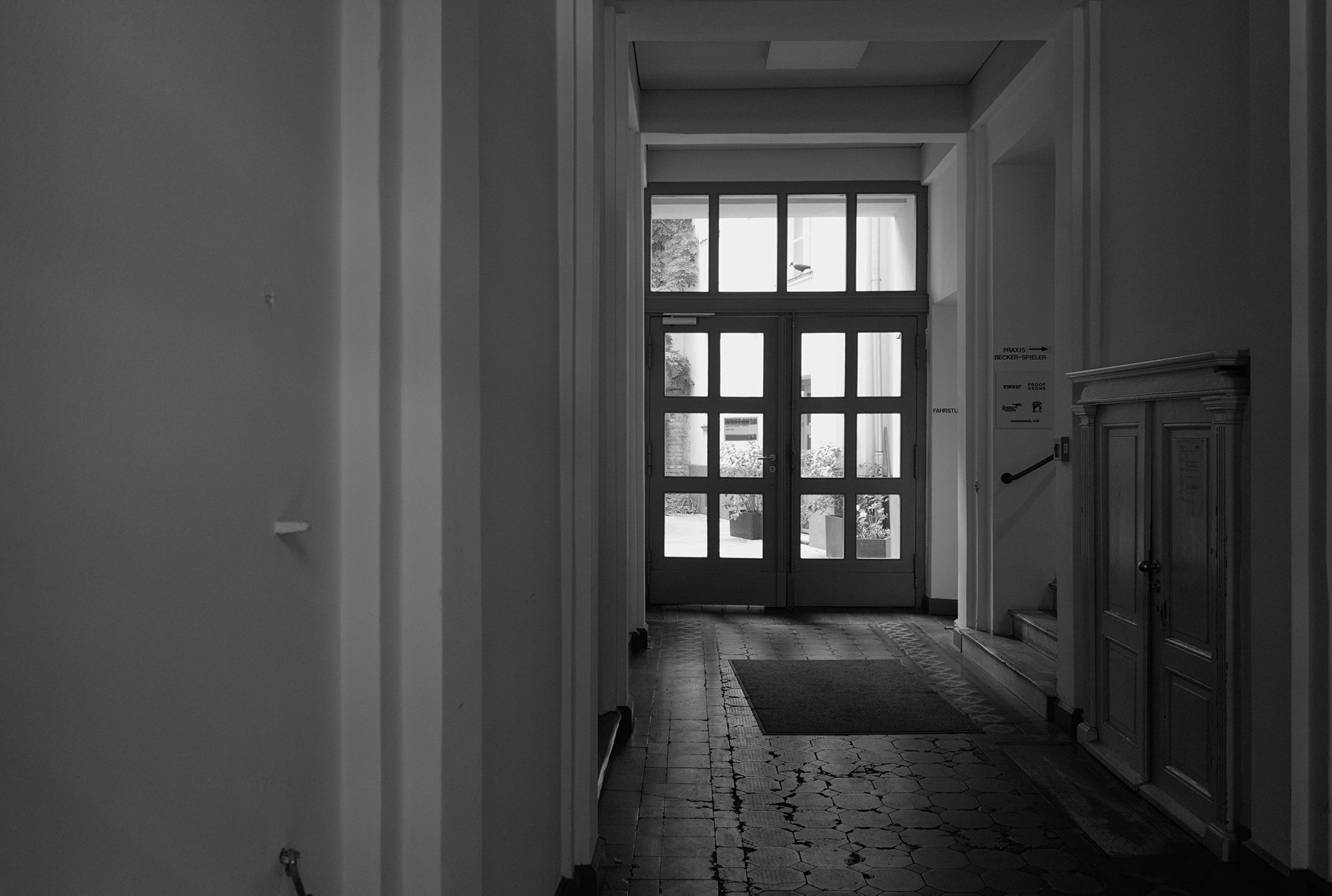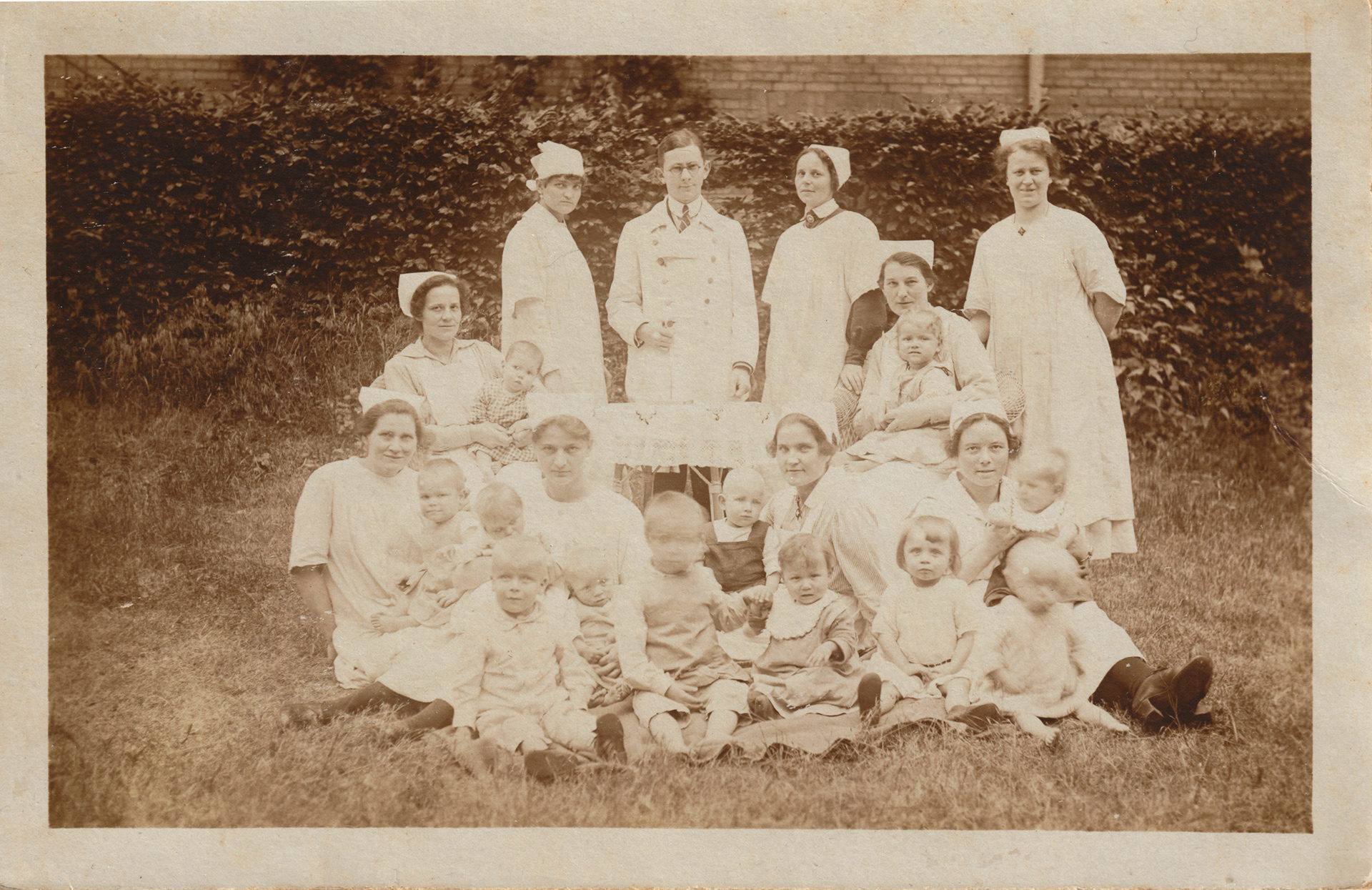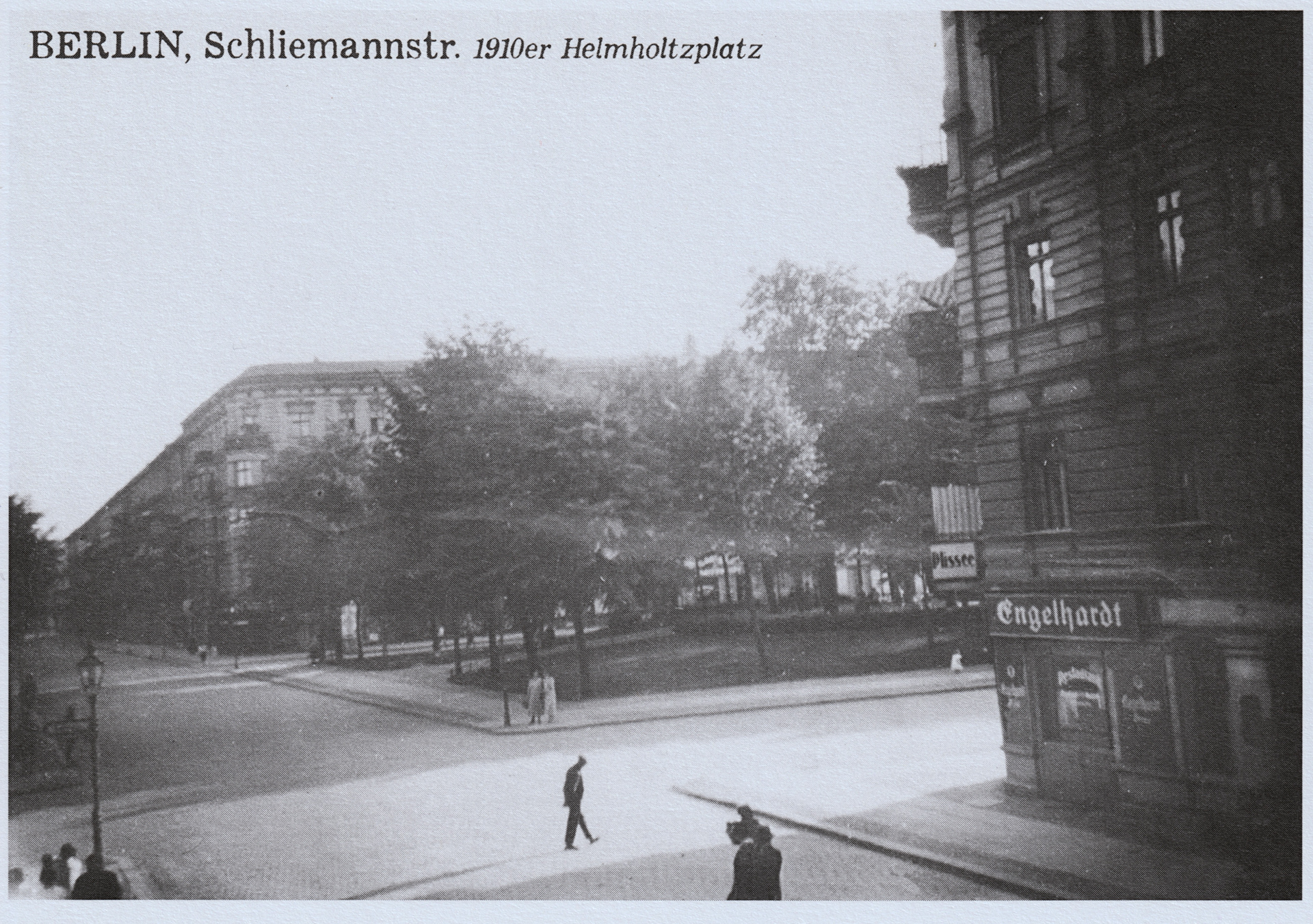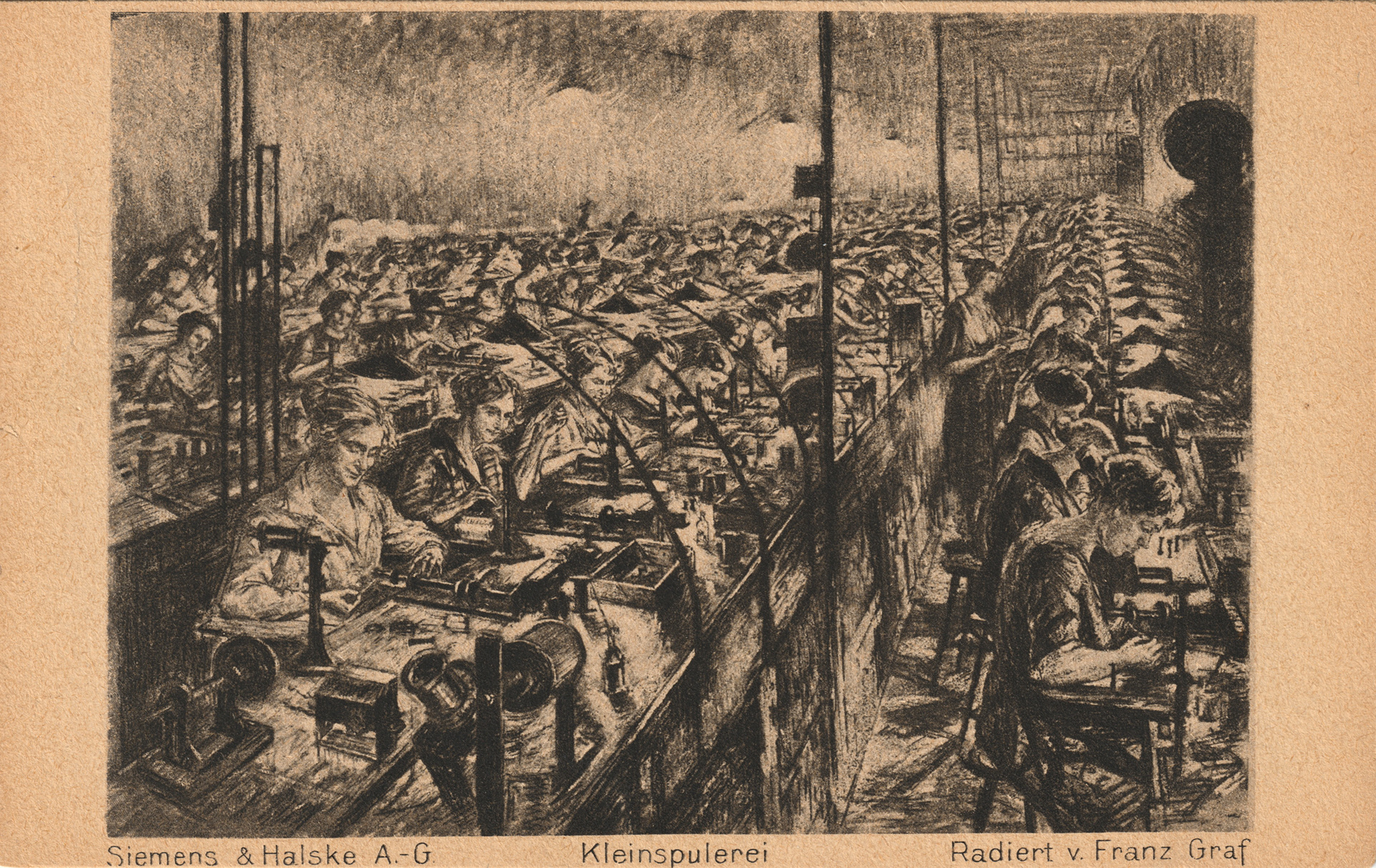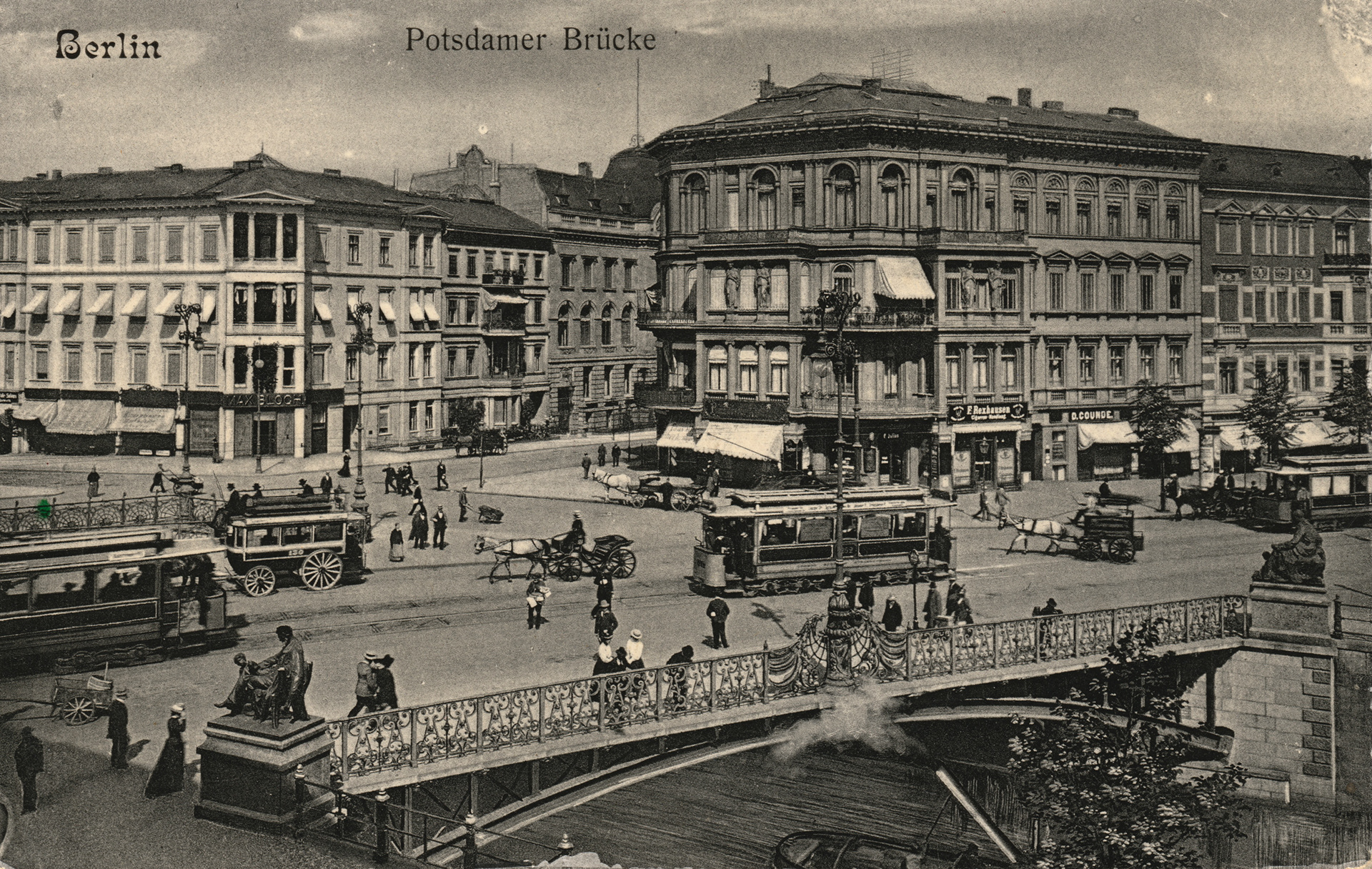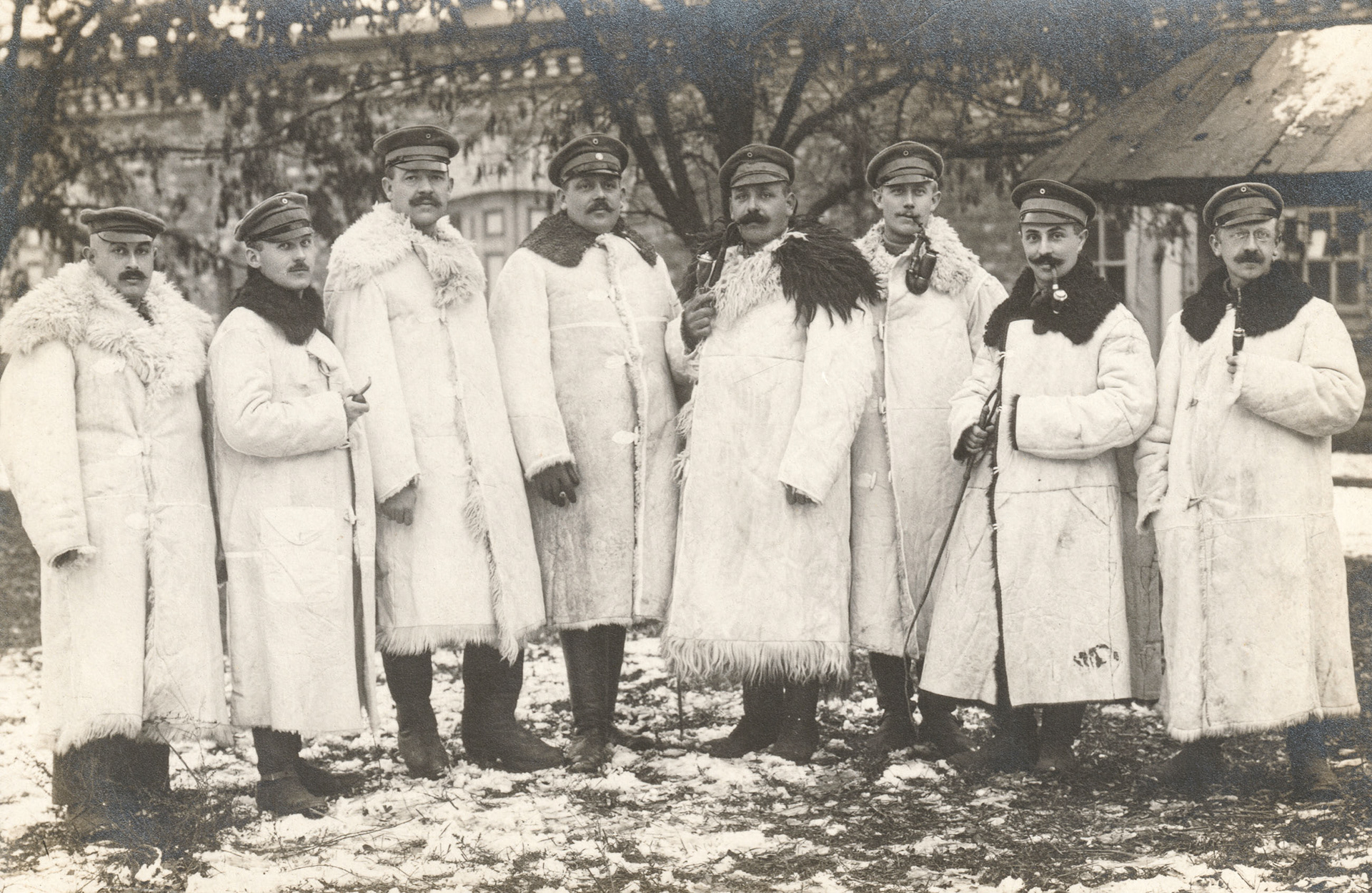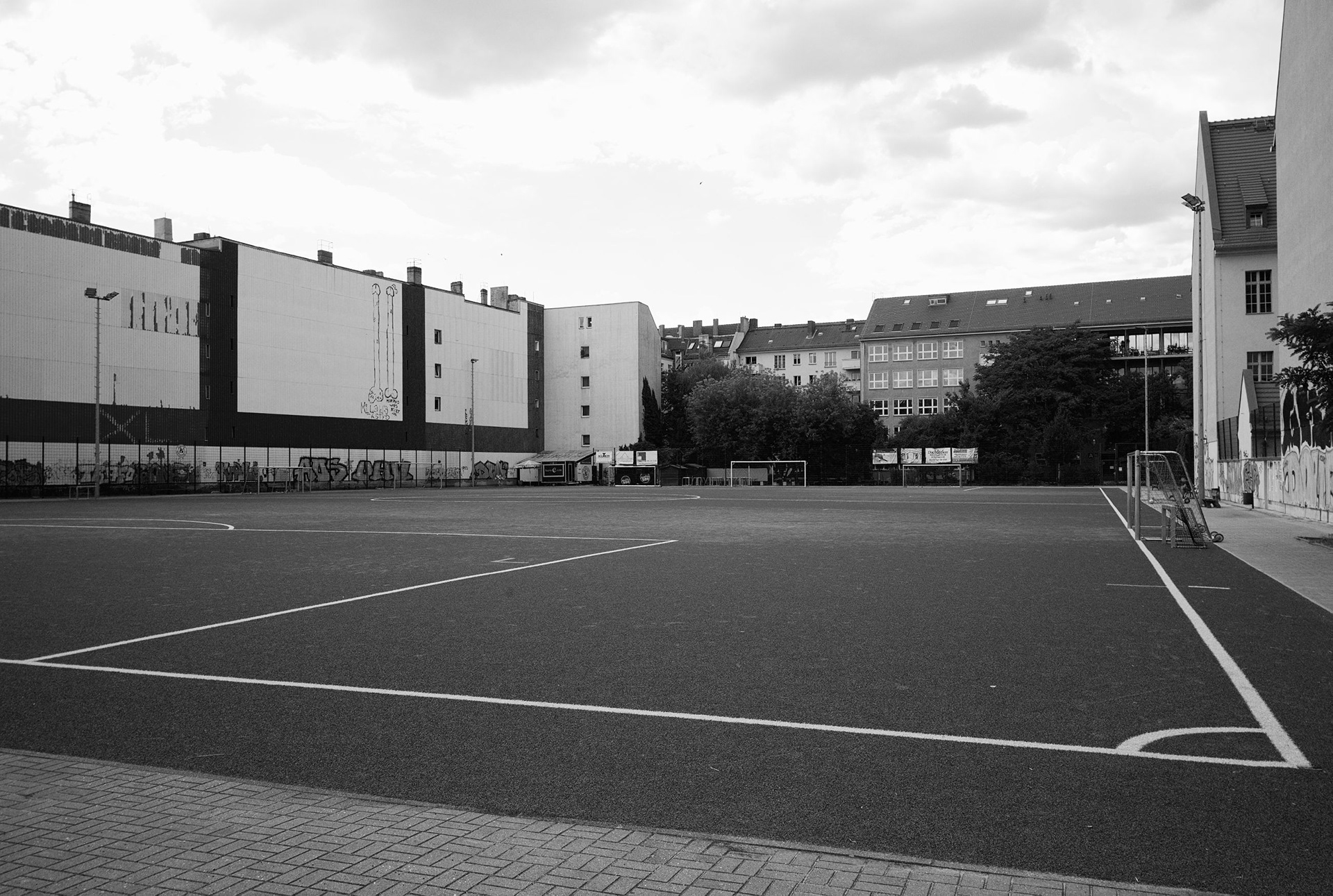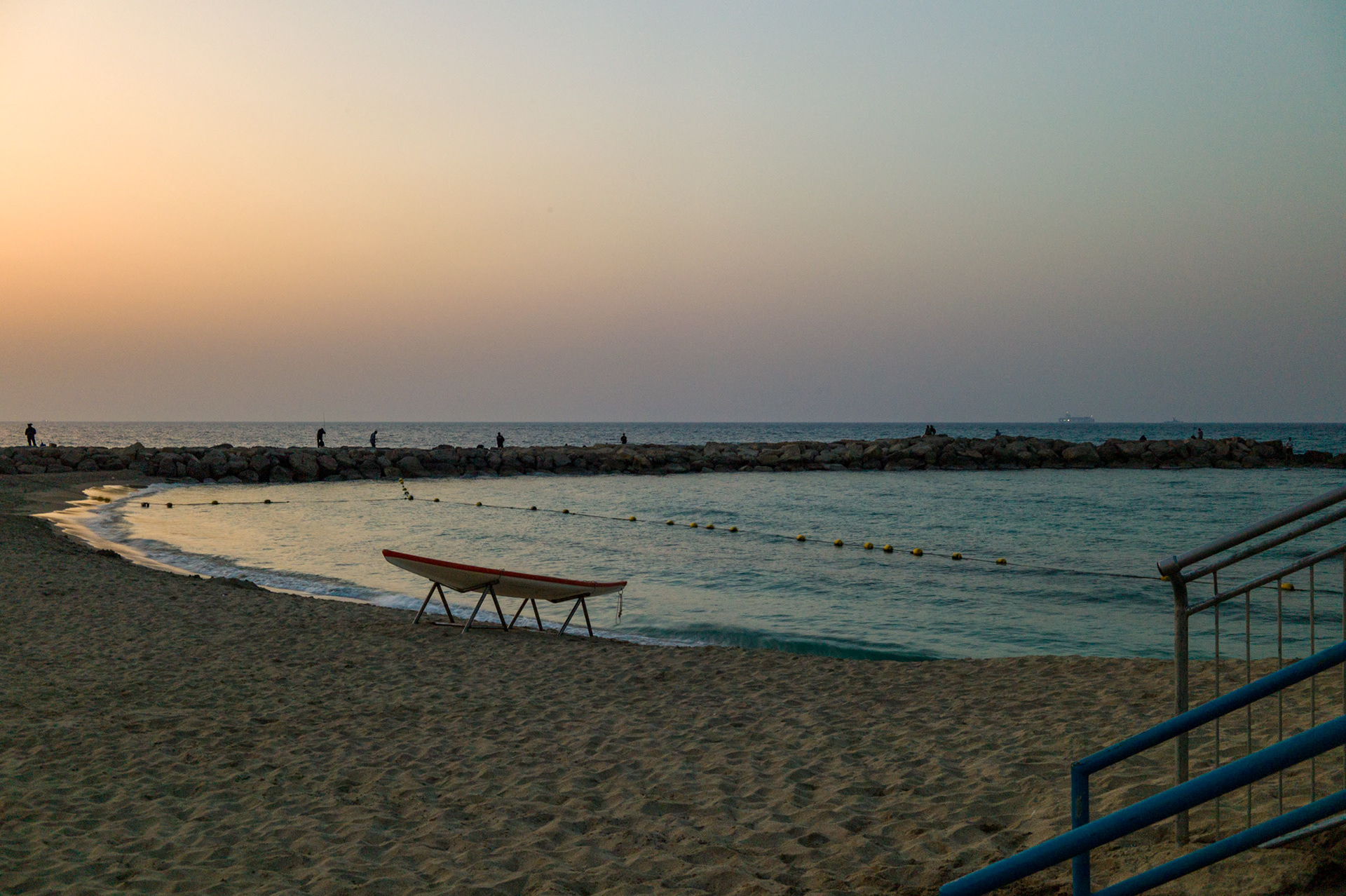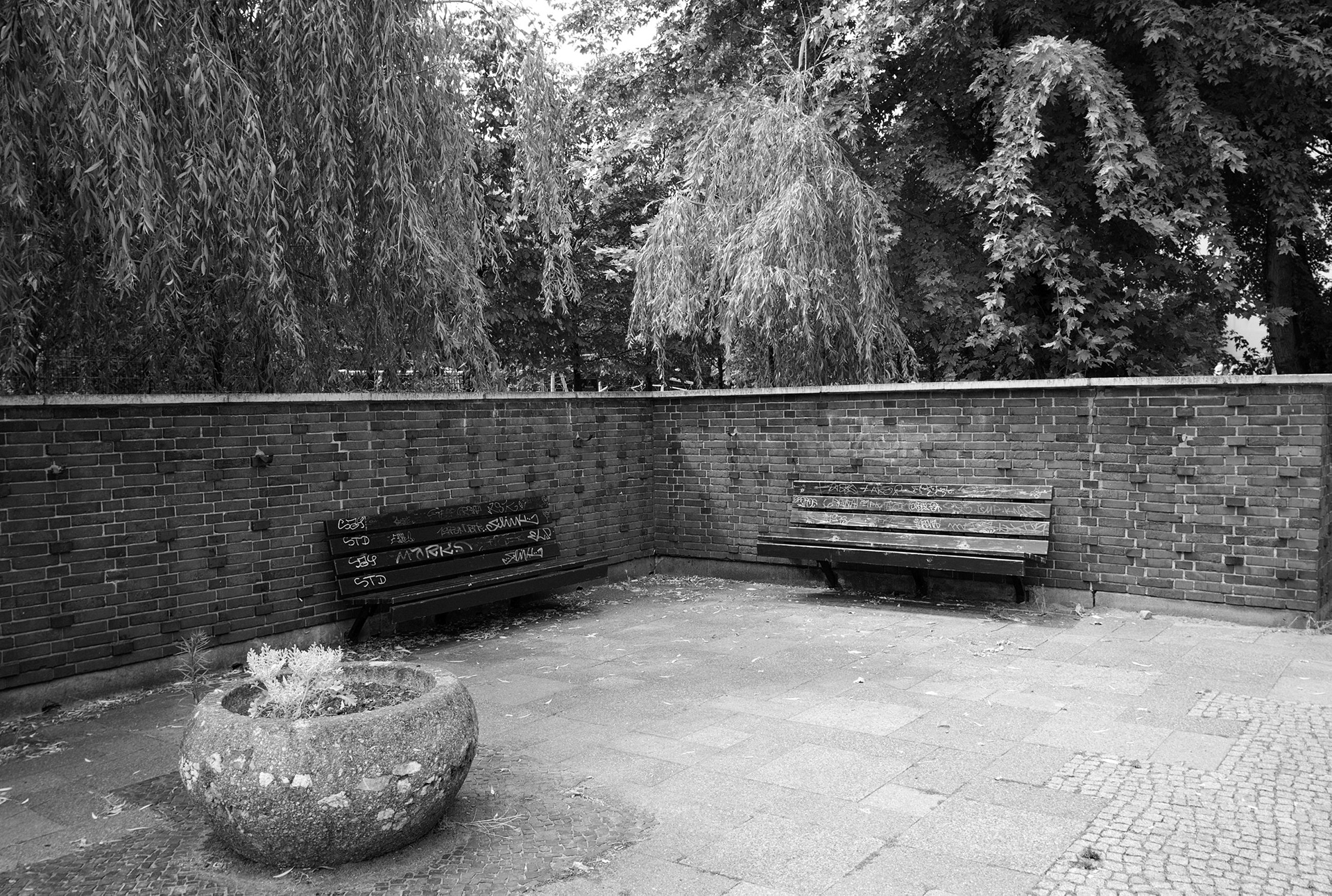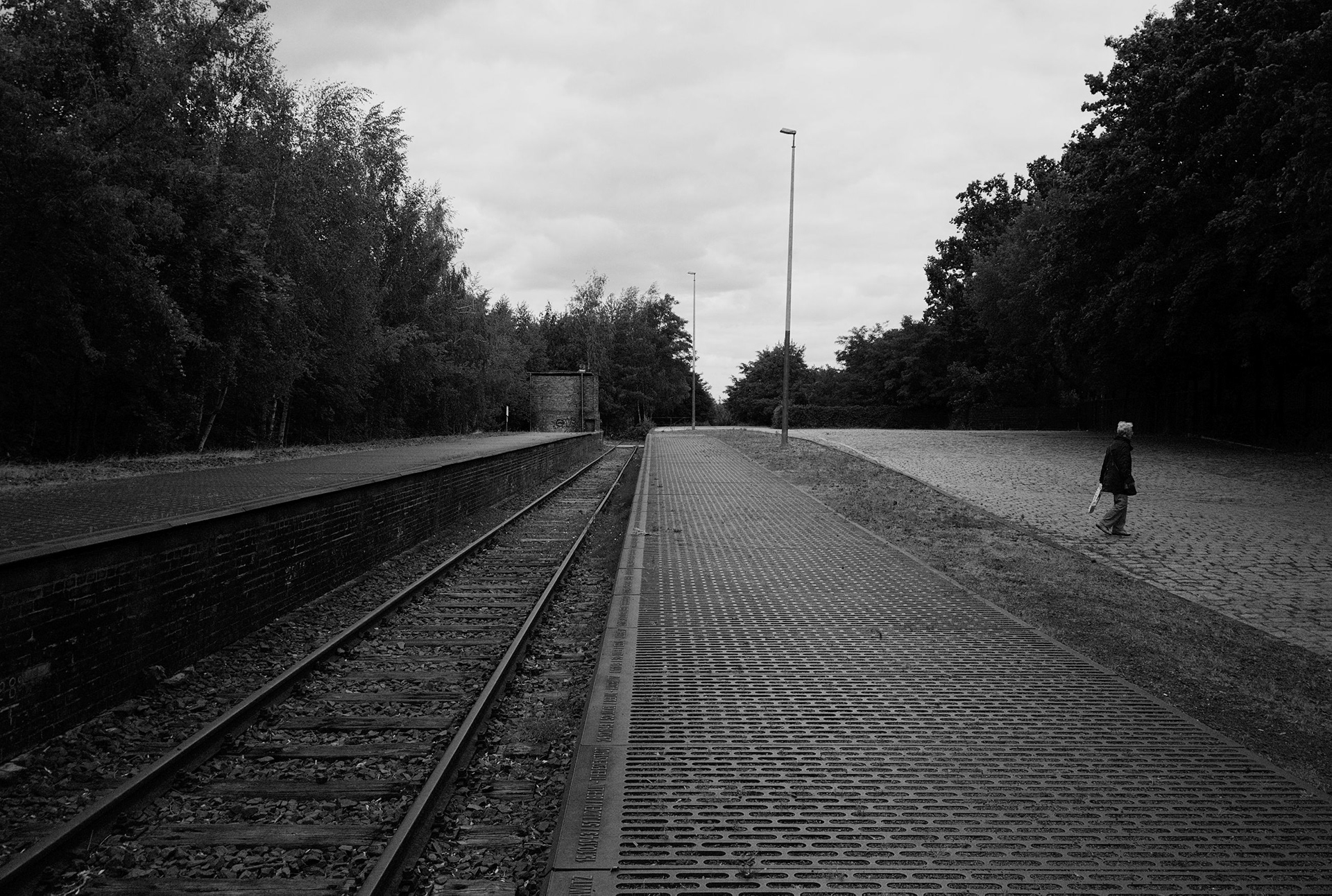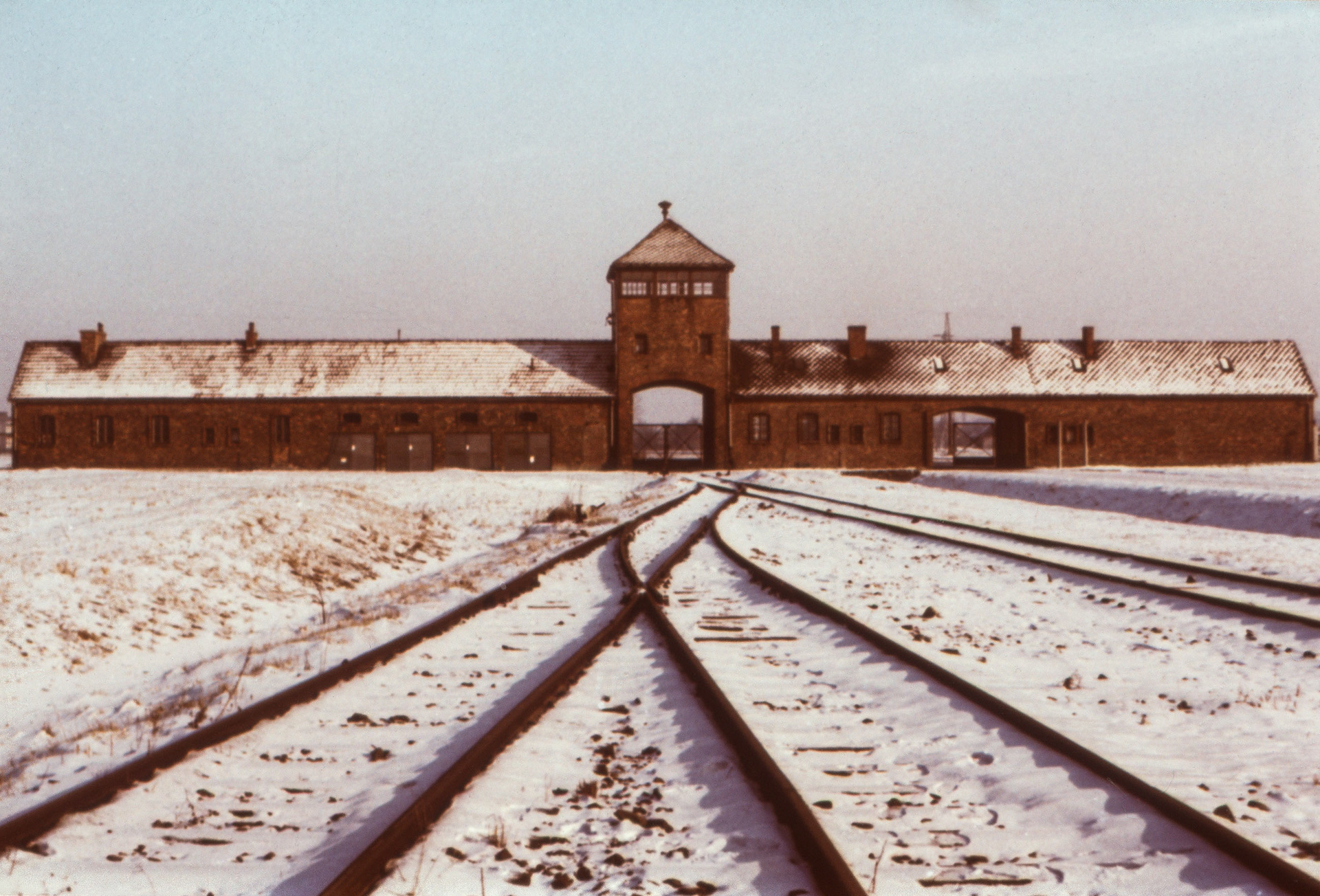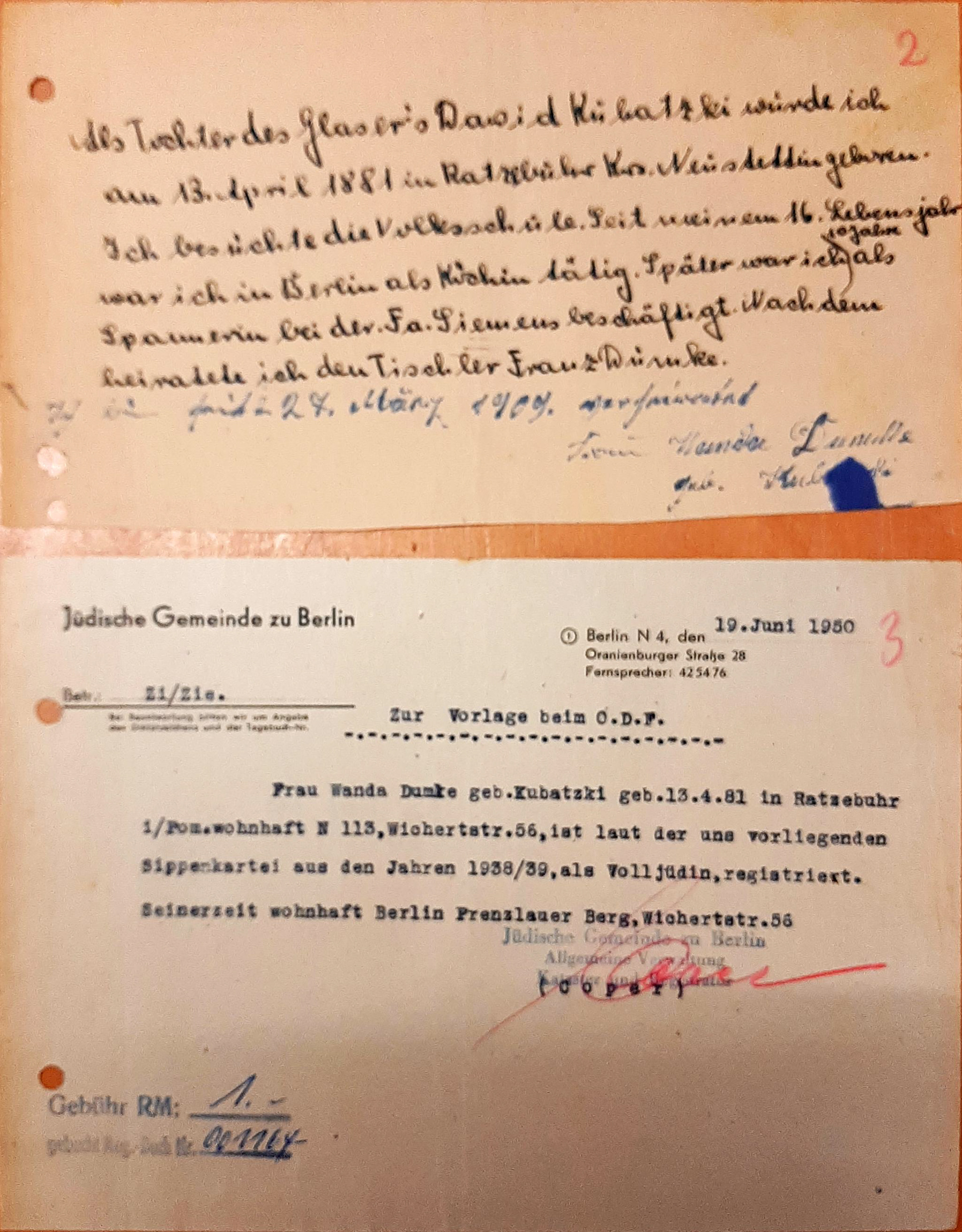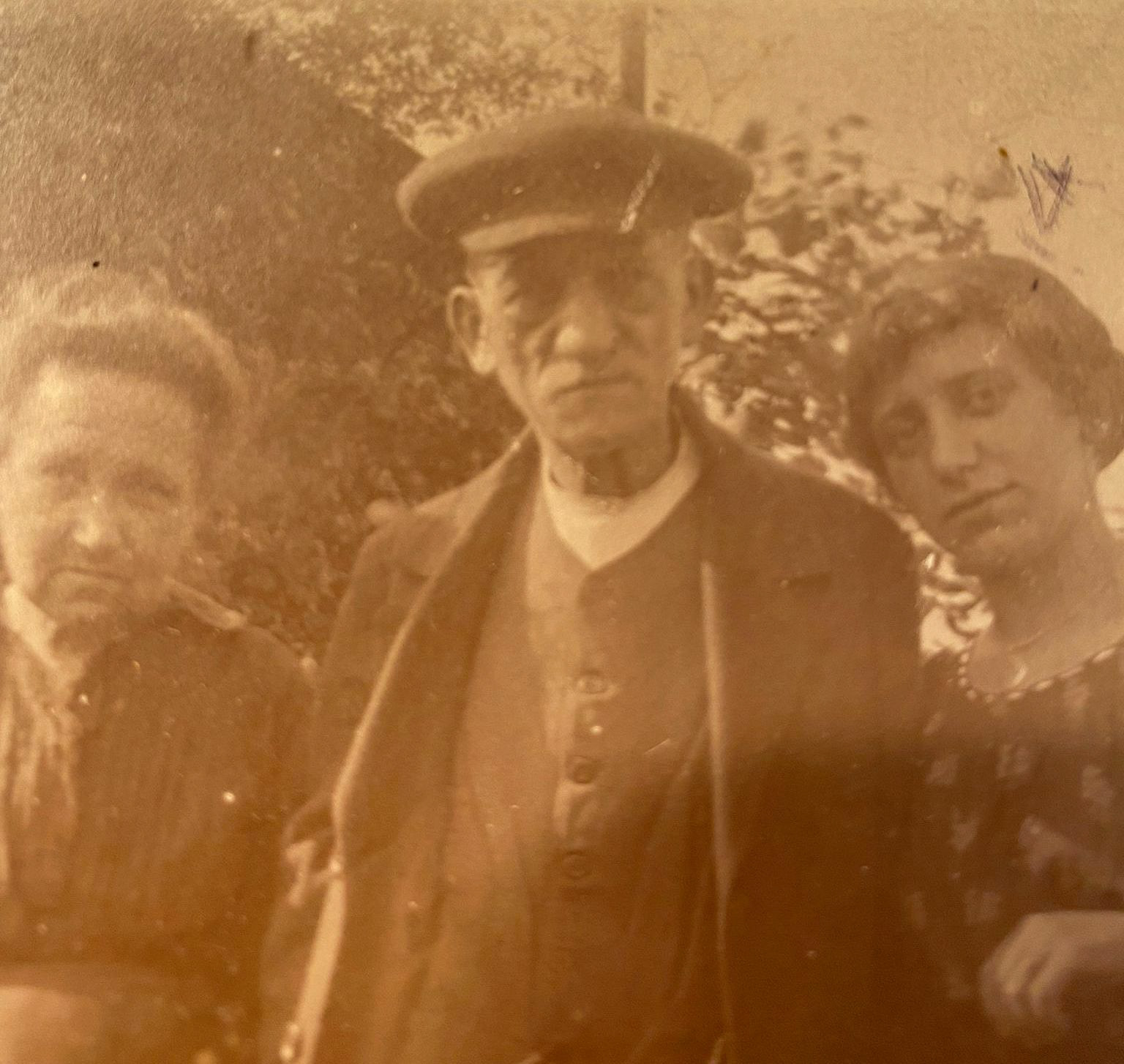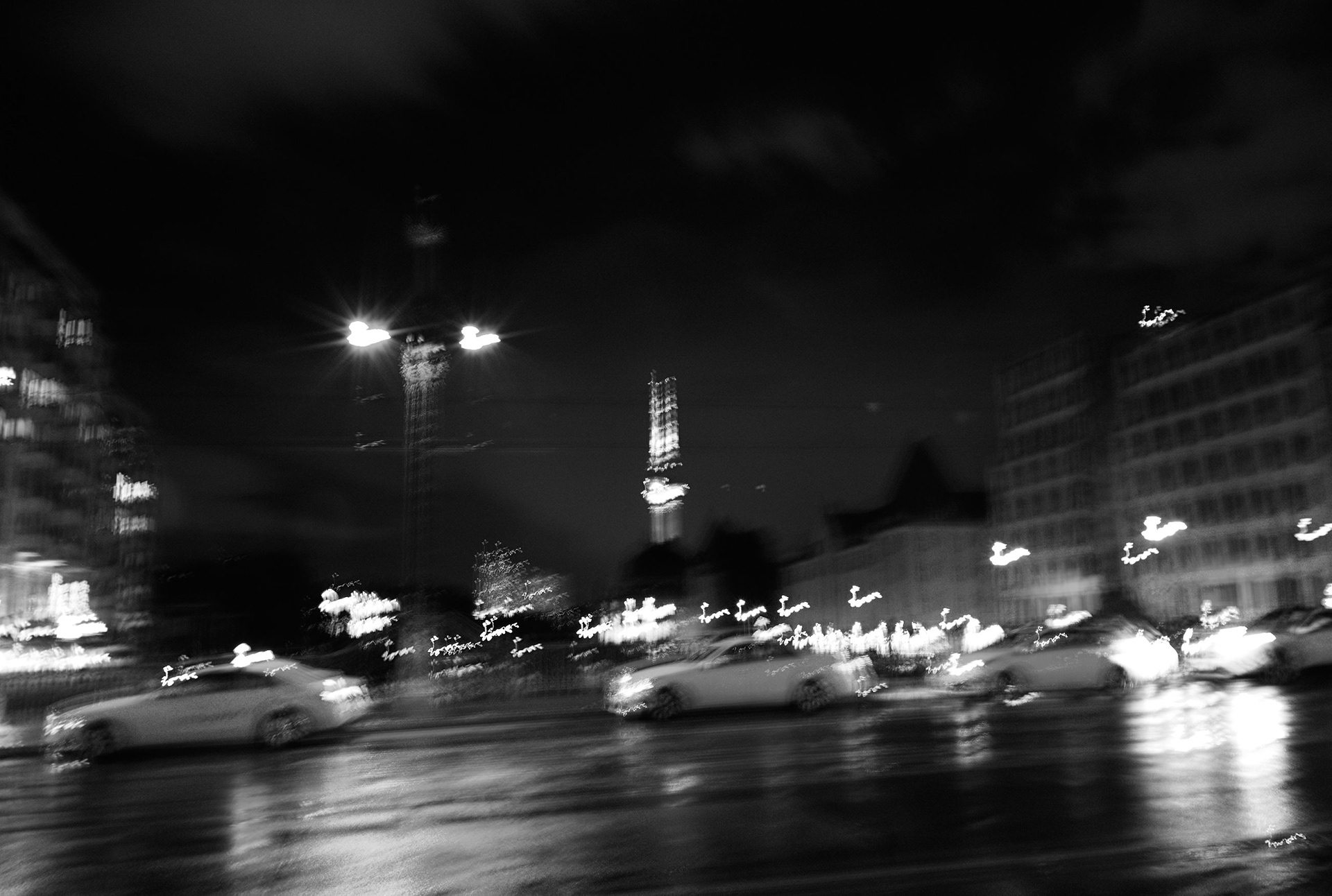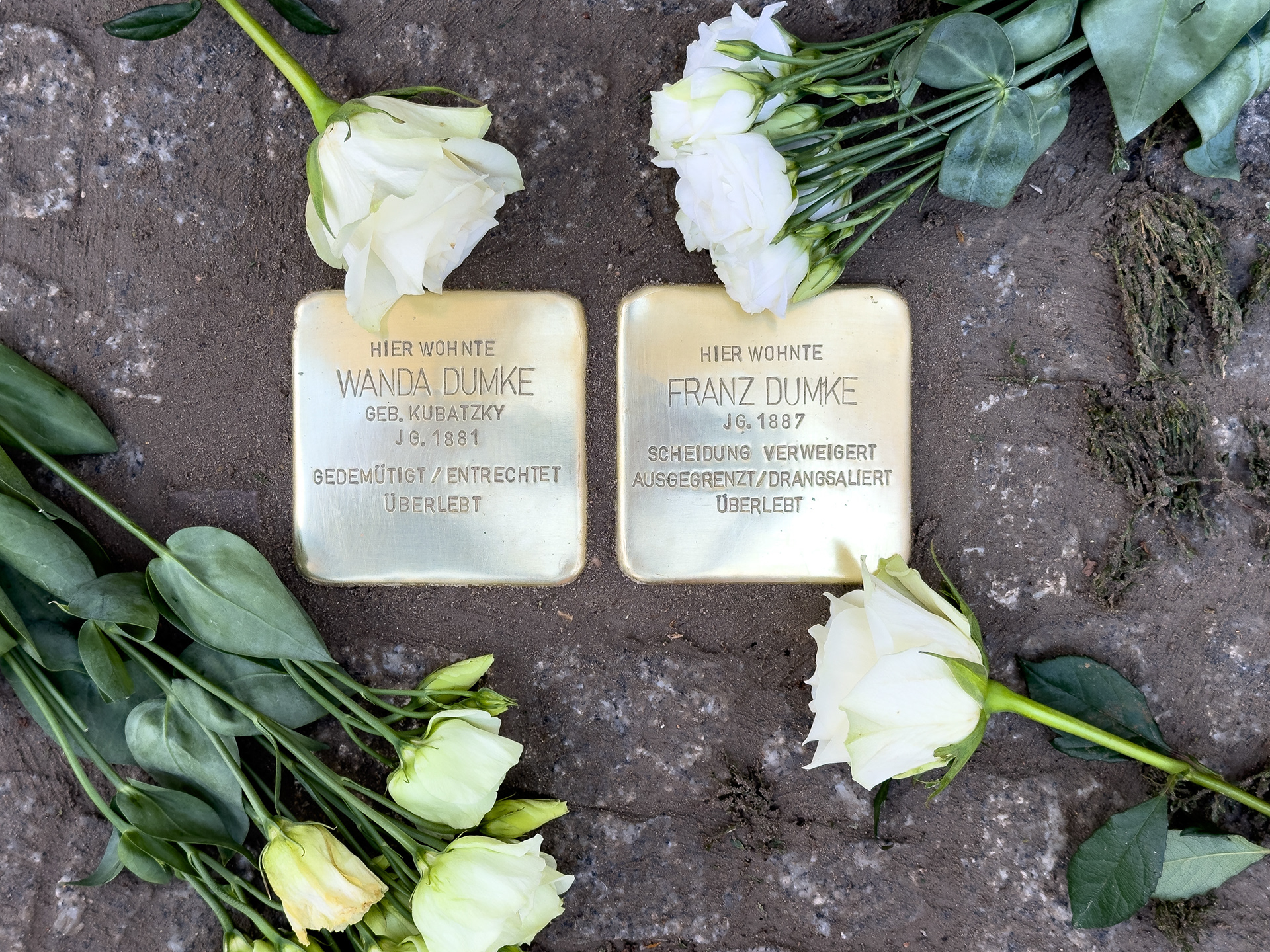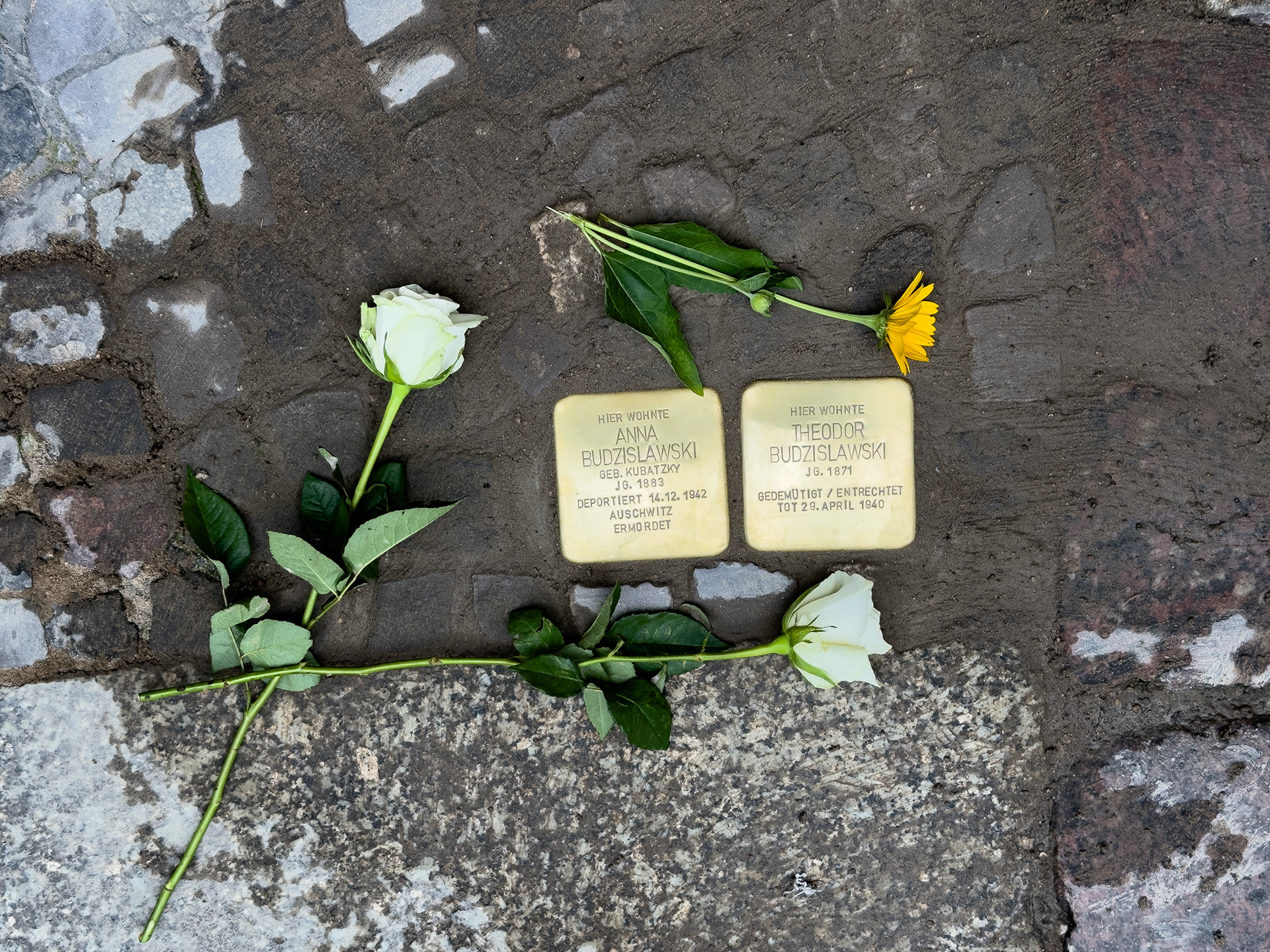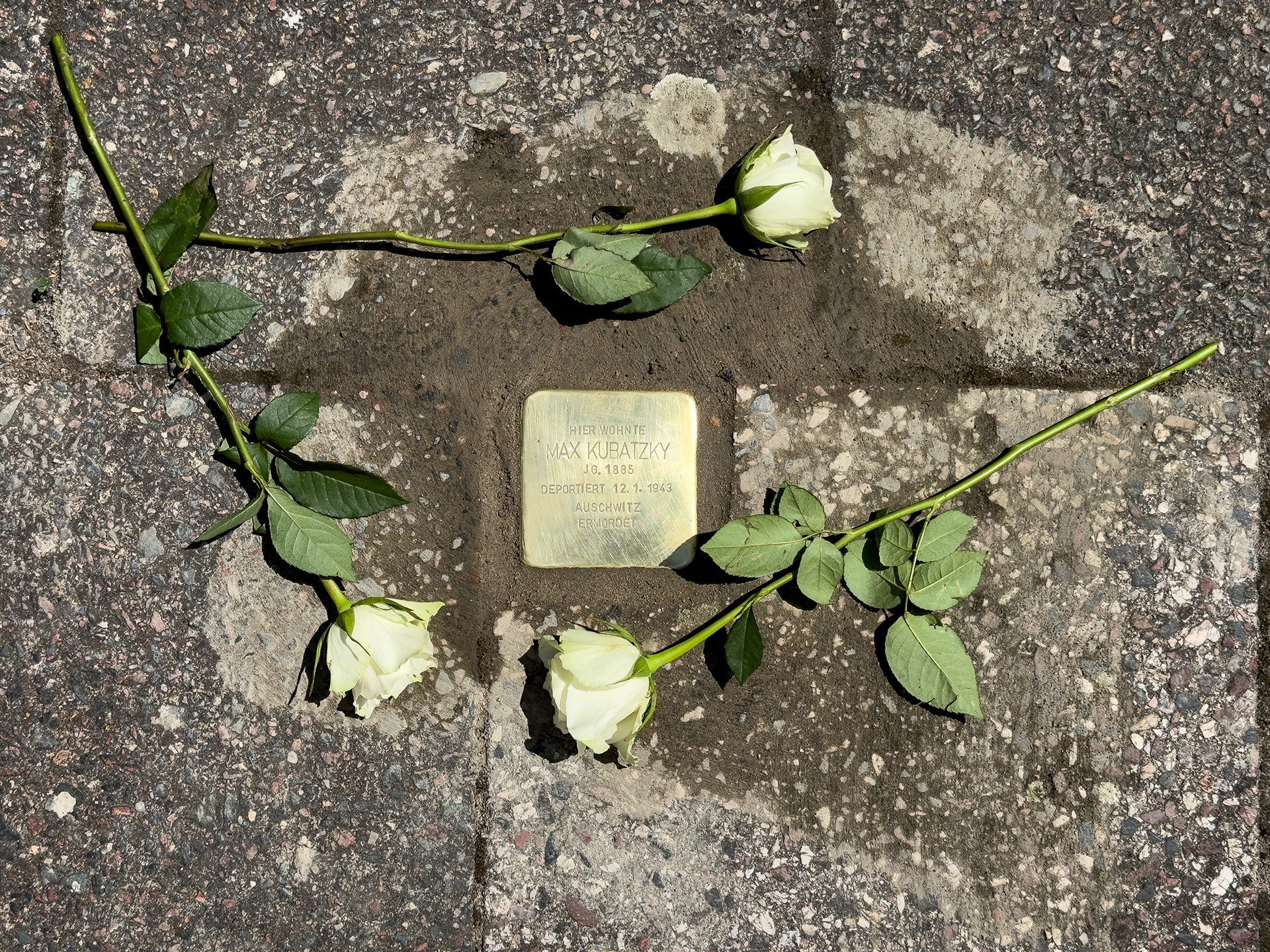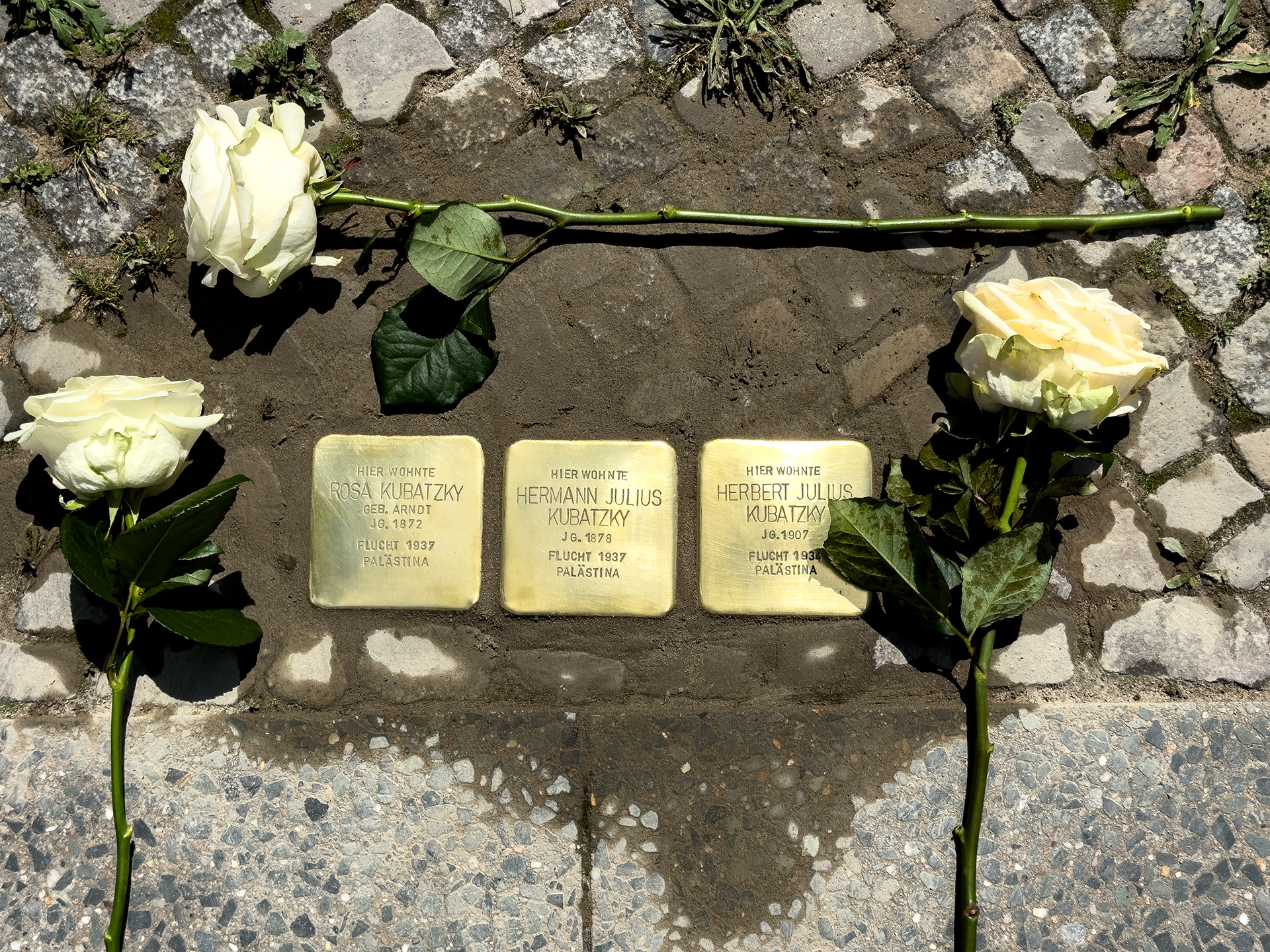
This postcard started the curious story.

In 2000, I was at a flea market in Berlin Steglitz.

At one of these stands, I looked for postcards and picture cards with motifs that I liked.

These are a few of the cards purchased there.

And this is a part of postcards that I bought.

I also bought this postcard that day. It was only later that I realized that all these postcards belong together.

This postcard is also part of it. At home I realized that these cards were an exchange of letters between Franz Dumke and Wanda Kubatzkÿ. I was fascinated by the name Wanda and wanted to know more. I started to research, but I found little. But what I found electrified me. Wanda's family lived in Ratzebuhr. And I found out that Ratzebuhr is only a few kilometers away from the place where my grandmother was born.

These are my grandparents. My grandmother was born in Jastrow. Here she is standing with my grandfather in front of the house where she was born in Jastrow. It is unbelievable that there are only a few kilometers between these two places. They are neighboring towns.

For twenty years I tried to get more information. Unsuccessfully.

(c) Ancestry - In November 2020, I suddenly came across this document on a family research platform. It is Wanda Kubatzkÿ's birth certificate. My search is picking up speed.

This is a postcard of Ratzebuhr, today Okonek. Wanda was born here.

1873 - Jennÿ Lindenberg and David Kubatzkÿ found a family in Zippnow. Both belong to the Jewish community in Zippnow. In 1873 their first child Johana (called Hanna or Hannchen) is born. In 1875 their second child Hedwig is born. In the same year the family moves to Ratzebuhr. (Here the Danziger Street in Razebuhr) Here are also born Louis in 1876, Hermann Julius in 1878, Wanda in 1881, Anna in 1883 and Max in 1885.

This postcard most likely shows the four Kubatzkÿ sisters. The woman kneeling in the front right is Wanda.

Wanda completes elementary school in Ratzebuhr and goes to Berlin in 1897 with her older sister Hedwig. Here is a house on Münzstrasse where Wanda lived for a short time.

In Berlin, Wanda works as a cook for two years. Hedwig is a milliner. At the beginning, the two sisters live together. Later, Wanda moves into her own apartment.

1907 - Wanda gives birth to a son, whom she names Walter. The child's father is unknown. She gives her child to the Friedrische Orphanage in Boxhagen-Rummelsburg. Here is a photo from the 1920s in Rummelsburg.

1909 - Wada moves to Lychener Strasse in Berlin. It is likely that she also meets the carpenter Franz Dumke, who is six years younger than her, here. He also lives on Lychener Strasse with his parents and other siblings. This picture shows the immediate residential surroundings of Franz and Wanda.

1899-1909 Wanda works as a spanner at Siemens for 10 years.

Wanda's older sister Hedwig lives on Potsdamer Strasse. She works as a milliner. Wanda has a close relationship with her and visits her often. 1909 - Jewish Wanda Kubatzkÿ and Lutheran Franz Dumke marry in Berlin. Shortly thereafter, Wanda's illegitimate son dies in the Friedrich orphanage. Later that year, her father David also dies.

Group photo of soldiers in the First World War. | Photographic Art Studio J. Juress, Nowy-Dwór, 1915 - 1915-17 Franz is stationed near Stolp and Hammerstein as a reserve recruit. He is taking a company leader course and writing postcards to Wanda.

Wanda and Franz are now living together on Wichertstrasse in Berlin Prenzlauer Berg. The house where Wanda and Franz lived is located behind the sports field. - In the 1939 census, Wanda is still listed as living with Franz Dumke. This is interesting because, as a Jew, she would have been subject to severe repression as early as 1939. What happened to Wanda during the following years remains completely unknown.

Hermann Julius Kubatzkÿ, Wanda's older brother, emigrated to Haifa, Israel in 1937 with his wife Rosa, née Arndt. Rosa died in Israel in 1944. They had a son who later started a family of his own and emigrated to the United States. Hermann Julius was naturalized in Israel on December 16, 1945.

Hedwig Kubatzkÿ, Wanda's older sister, is picked up by the Gestapo from the “Jews' house” on Turmstrasse in Berlin, where she was forced to live, and taken to the Lewetzowstrasse transit camp. She spends a few nights here. Today there is a memorial here.

On November 27, 1941, a train carrying Hedwig and 1052 other people left this platform for Riga. The train stops on the outskirts of Riga. Pits are to be dug here in Rumbula Forest. All 1053 passengers on the train must undress, climb into the dug pits and lie face down on the dead bodies below them. They are shot from behind.

Johana is deported to Riga on August 15, 1942. She survives the transport itself, but is not classified as fit for work and is shot immediately after arrival in the forest of Bikernieki. Anna Budzislawski, née Kubatzkÿ, was deported to Auschwitz on December 14, 1942, and all traces of her were lost there. Max Kubatzkÿ divorced his wife Maria under pressure from the authorities. He was also deported to Auschwitz.

Only about 6,500 Jewish Berliners survived the Holocaust in Berlin. In the membership directory of the Jewish Community of Berlin (as of July 1, 1947), Wanda Dumke, née Kubatzkÿ (or Kabatzky, as she is written there), is listed as a living member. She is therefore one of the few survivors. She was probably saved by her “privileged mixed marriage” with her husband Franz. Same address is given as before the war.

Franz (center) and Wanda (left) are supposed to be seen here. Franz Dumke died on April 28, 1969. Almost six months later, on January 18, 1970, Wanda Dumke, née Kubatzkÿ, also died in Berlin at the age of 88. She lived until the end in the apartment that she had moved into with her husband in 1917.

April 2021 - I receive a message from a relative of Wanda's brother Hermann. She asks me if we are related and asks me for help in the further search. An intensive joint search begins. We initiate the first stumbling block for Hedwig Kubatzkÿ. Nine more for the family will follow.

June 24, 2024 - In Berlin, ten stumbling blocks are laid for the Kubatzkÿ family in the presence of relatives of Wanda's brother Hermann. Finally, there are places where the relatives can grieve and the victims are remembered.
